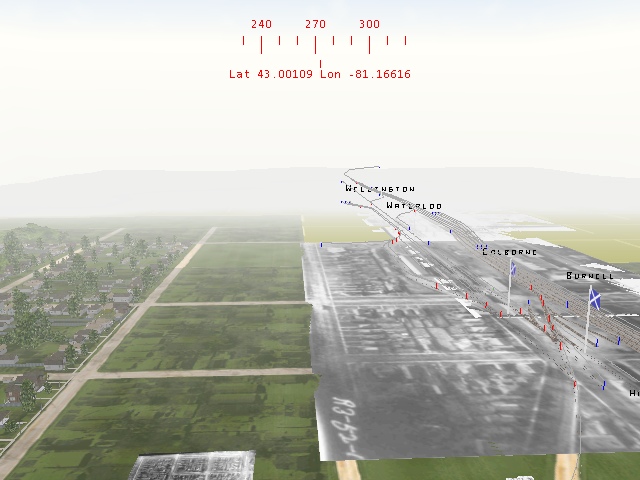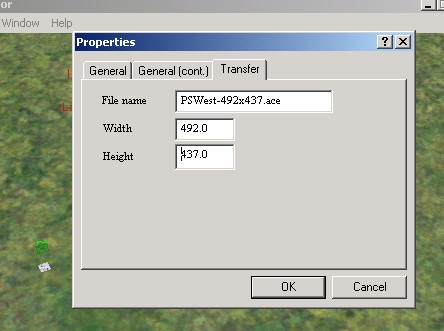Using Maps/Aerial Photos as Transfer Objects in Route Editor
by Wayne Campbell
Overview
This is a technique to use scanned maps or airphotos to aid in exact placement of track and structures. The technique allows a single map to cover up to a 500 meter square area and works best in dense urban areas. For larger areas, traditional methods with markers is easier. I am fortunate to have Fire Insurance maps for the populated areas of my route. These show exact locations for track, bridges, rivers, roads and buildings. With these maps, I can lay track right along the lines on the map, drop structures in the exact spot and place fences exactly along property lines.





